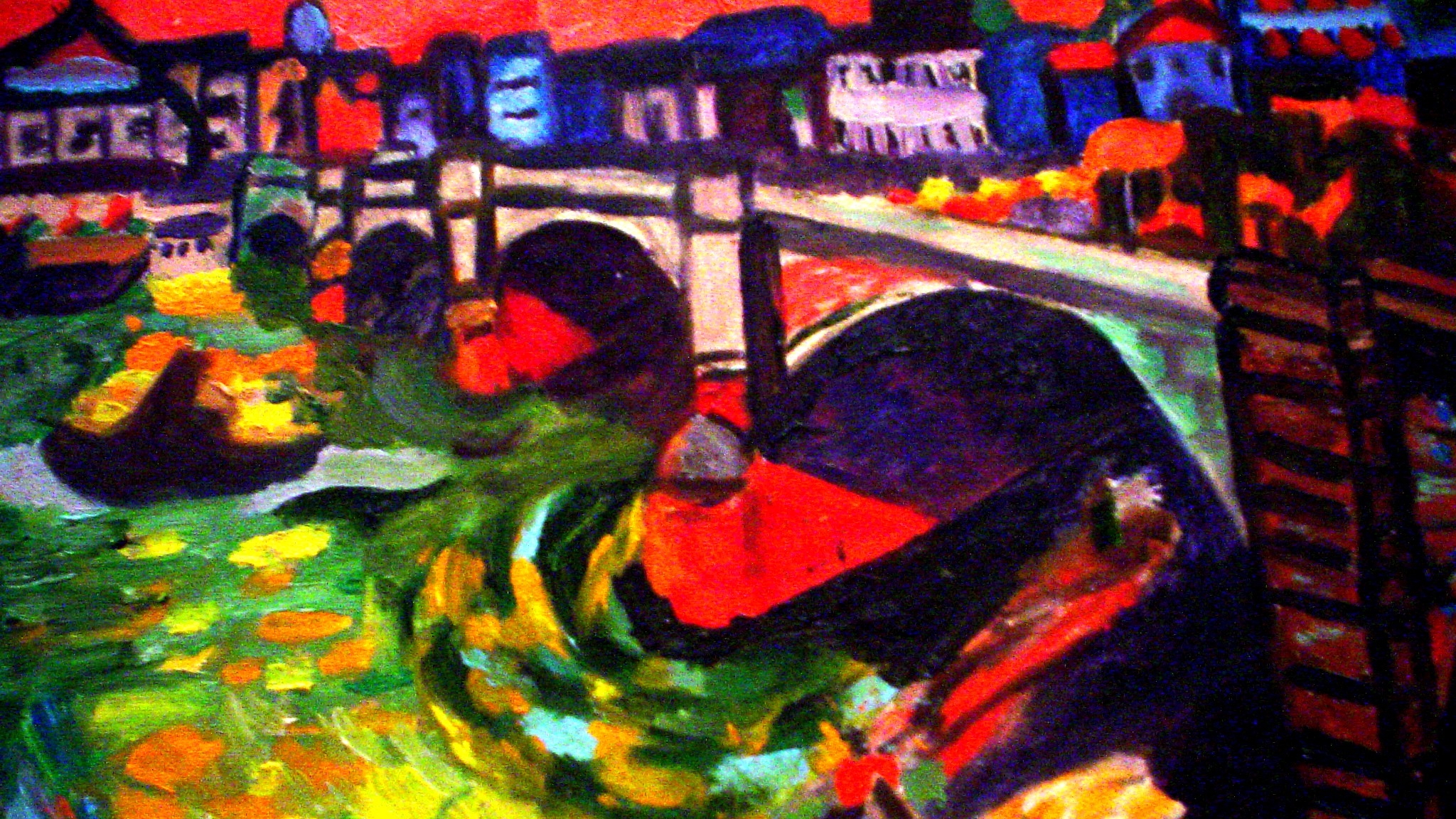
André Derain: The London Paintings
27 October 2005 to 22 January 2006
André Derain (1880-1954) came to London in 1906 to paint a series of works that would rival Claude Monet’s earlier celebrated views of the city. The result was an extraordinary group of large-scale paintings which overthrew conventions with their unrestrained use of pure colour and exuberant brushwork. This was the first exhibition dedicated to these masterpieces of 20th century art and showed 12 of the most important works from galleries around the world together in one room.
When the Parisian art dealer Ambroise Vollard dispatched Derain to London in March 1906 the young artist had much to live up to. The previous year, Derain emerged as one of the most radical artists in Paris following the now famous exhibition at the Salon d’Automne where Derain and Matisse had first revealed their groundbreaking new approach to painting. Characterised by the liberation of colour from its representational function, fused with an overwhelming sense of creative energy, their work represented what Derain described as, a complete renewal of expression
. Such was their break with conventions of painting that the critic Louis Vauxcelles branded the group Fauves, or wild beasts. Accordingly, Derain’s London paintings offer an unprecedented vision of the city. Whereas earlier artists such as Monet and James Abbott McNeill Whistler had painted London through the haze of its rising blue-grey mist and smog, Derain offers us exhilaratingly bright, multicoloured views of the city, showered in golden light or else empathically constructed through bold contrasts of colour.
Derain chose a variety of London subjects, including emblematic views of historical sights, such as the Palace of Westminster, and activity in the city’s parks and great streets. Like Monet before him, he concentrated on the river, producing no less than six views of Tower Bridge, one of the most popular tourist attractions in the city. However, Derain was also fascinated by the working life of the river, particularly the Pool of London, with its busy international commercial traffic, wharves and industrialised banks. Recent research into Derain’s previously little-known London sketchbook and his letters allow us to track the artist’s movements through the city as he sketched rapidly along the river, either in among the docks or else looking down from one of the bridges. It also reveals that he spent time in the British Museum studying the ethnographic collections which were a source of inspiration for his Fauve paintings.
Vollard bought Derain’s London series in its entirety, 30 paintings in total of which 29 are known today, but did not exhibit them as a group. Although some have been included in general exhibitions of Fauvism, they have never before been the specific focus of a museum exhibition. By displaying 12 of the major paintings from the series, André Derain: The London Paintings aimed to reassess his remarkable achievement. It considered the background to the commission, including Derain’s response to Monet, the searching experimental qualities of the technique, the choice of subject matter and the evidence provided by the sketchbook and letters.
The exhibition was accompanied by a fully illustrated catalogue, reproducing all 29 paintings in the series together with essays by Jacqueline Munck, curator of the Musée d’Art Moderne de la Ville de Paris, John House, The Courtauld Institute’s Walter H. Annenberg Professor and Nancy Ireson a specialist on early twentieth century French art. Organised at The Courtauld Gallery, in close proximity to many of Derain’s river views, this exhibition provided a significant contribution to our understanding of this pivotal moment in the history of twentieth century art.